IAC News
IAC News No.130, August 2023
Japan Society of Civil Engineers International Activities Center Augusut 10, 2023 IAC News No.130
The 2nd Salon for Int’l Civil Engineers and Students
“Finding a job in Japan as a foreign engineer: challenges and solutions”
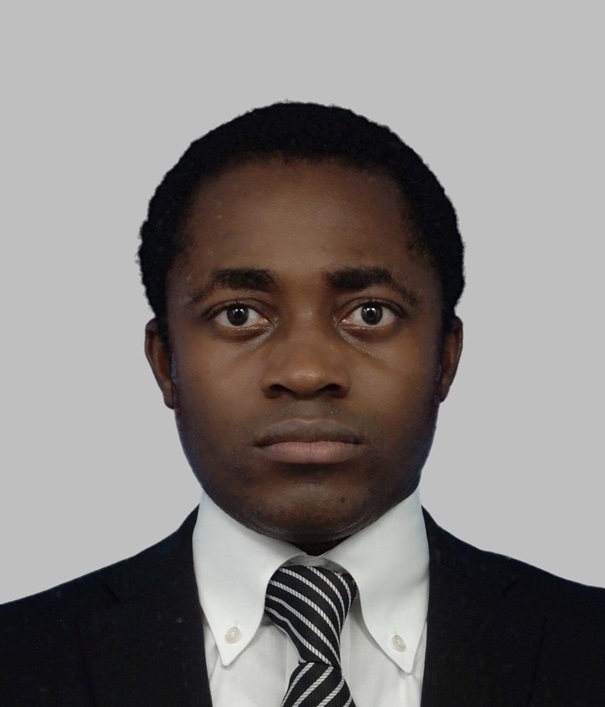 Edalo Serge
Edalo Serge
(Nippon Engineering Consultants Co., Ltd.)
The 2nd Salon for Int’l Civil Engineers and Students was organized by International Student Support Team in Int’l Civil Engineering Group, Int’l Activities Center (IAC), JSCE. The program was held online on Saturday, May 13, 2023, from 10:00 to 11:30 with over 60 students from different universities all across Japan. In addition, a worker from Australia and students from India and Vietnam have also participated. The theme was “Finding a job in Japan as a foreign engineer: challenges and solutions”. This was to provide the participants with essential information necessary for job searching in Japan.
The salon started at 10:00 with an open remark delivered by Mr. Ji Dang, associate professor at Saitama University. It was followed by a presentation on how to search for a job in Japan as a foreign engineer by Mr. Shrey Sthapit from Nippon Koei Co., Ltd. Thereafter there was Senpai session where international civil engineers working in japanese companies shared their experiences about job hunting. The salon ended at 11:30 with a closing remark given by Mr. Izawa Yoshinori from Hazama Ando Corporation.
In the opening remark, Assoc. Prof. Ji Dang introduced Civil Engineer International Students (CEIS) (the present salon organizer) as a team mainly dedicated for providing support to international students in Japan. He presented the activities held by CEIS such as Host Senpai Program, organization of salon on various topics, etc. He proceeded with sharing JSCE homepage link, invited participants to attend the upcoming summer symposium which will be hosted by JSCE. Finally, he presented the every year held Joint Company Information Session, and asked participants to join JSCE Associate Member to get more information.
Mr. Shrey Sthapit started his presentation on finding a job in Japan as a foreign engineer by a self introduction. He is from Nepal, received his bachelor degree from Waseda University in 2016 before joining Nippon Koei Co., Ltd. in the same year. In his presentation, he shared his experience about job hunting in Japan. He said that from the beginning, he already had a clear idea of the kind of company he was going to apply to. He did a three-weeks intership, attended some job fairs, had some OB interviews, and then started application process as early as January. He advised participants to do as much as possible internships in order to get to know companies’ work culture, hiring period, and to build connection.
During the senpai session, all the international civil engineers working in Japanese companies present in program shared their job hunting experience with participants. They include Mr. Rahul Garg (Sumitomo Corporation), Ms. Luisa Santa Spitia (Hazama Ando Corporation), Ms. Yen Xin Tan (Infrastructure Development Institute-JAPAN), Assoc. Prof. Ji Dang (Saitama University), Mr. Shrey Sthapit (Nippon Koei Co., Ltd), Edalo Serge (Nippon Engineering Consultants Co., Ltd.). Various topics such as internship, salary, job listing site, Japanese work culture, etc. were discussed. The initial plan was to cover 40 minutes. However the session was extended 30 minutes due to the exciting and passionate pace of the discussion.
The salon was closed by Mr. Izawa Yoshinori (Hazama Ando Corporation). He thanked the participants and assured that CEIS and JSCE will always be there to provide any assistance to international students.
The participants were very satisfied and wished for more salons on job hunting. It is suggested that the future salons will be more focused giving detailed information such how to write CV, how to prepare for interview, etc.
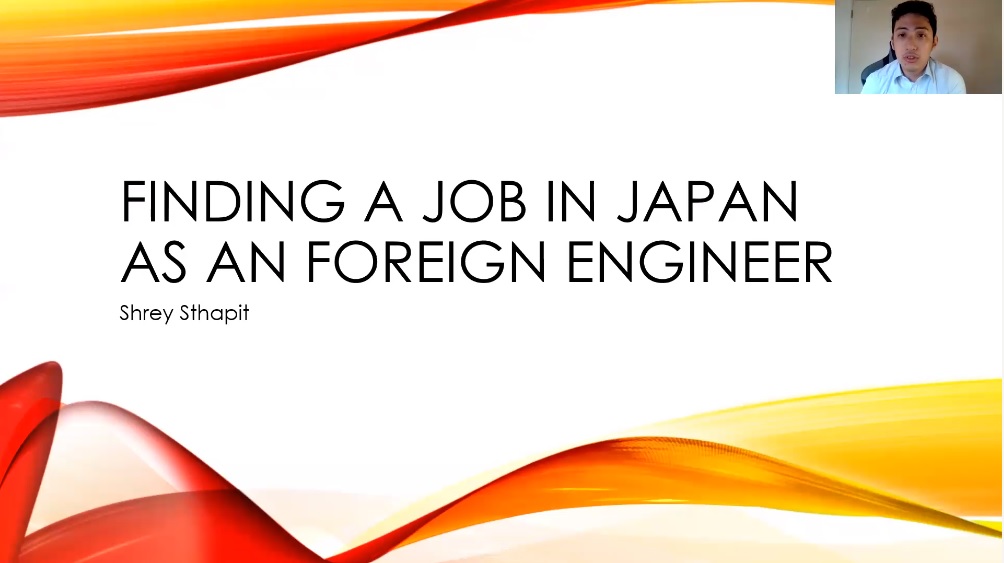
Mr. Sthapit Delivers the Presentation
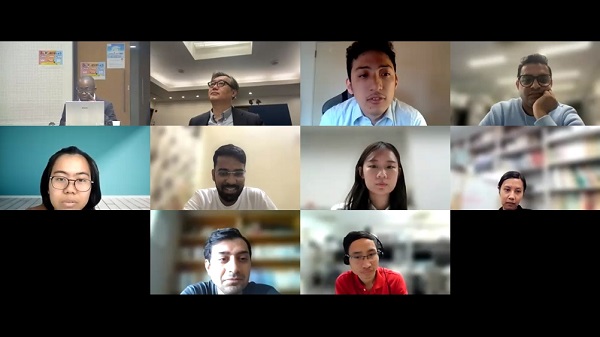
Senpai Session
【Reported by Edalo Serge (Nippon Engineering Consultants Co., Ltd.)】
D&I Café Talk Vol. 37
Aiming for a civil engineering field full of D&I!
A global engineer who keeps on challenging.

Guest speaker: Luisa Santa Spitia (Hazama Ando Corporation)
Host: Jonathan Gonzalez (Nippon Engineering Consultants Co., Ltd.)
Jonathan Gonzalez and Luisa Santa Spitia, international civil engineers working in Japan, and who are also members of JSCE's Global Civil Engineer Research Subcommittee, and International Engineers Group, respectively, had a short conversation under the framework of the 37th session of D&I Café Talk. The difficulties faced by foreigners and especially, women engineers working in Japan were shortly highlighted in this episode. You can watch this video on D&I's YouTube channel ( https://youtu.be/kCSII0xoG-E ) . Here is a summary of the topics discussed and some of the impressions of the audience that attended the live event on February 10.
■Luisa’s background and her life in Japan
Luisa came to Japan in 2014 to pursue her Ph.D. in civil engineering with emphasis on geotechnical engineering at the University of Tokyo. She joined Hazama Ando Corporation as a civil engineer since 2017. She currently works as an engineer part of the domestic civil engineering division, providing support to construction sites, in addition to performing research and development activities.
■Communication problems: Not only the language but the culture and interaction with people
Her studies at the University of Tokyo were in English, and although her native language is Spanish, she did not have great difficulty adapting to the language, so the first years living in Japan were not very difficult. However, when she started working, she realized that the basic Japanese she used for her daily life was not enough to work in Japan. This is a problem that affects many foreign students in Japan, as having a high level of Japanese is one of the basic requirements for getting a job. Luisa feels that this has been a major impediment to her professional growth. Additionally, she highlights the difficulty to adapt to the special way Japanese people interact, and the style of working in a Japanese company and in a male-dominated industry such as the construction industry.
| ・Comment from the audience (Female, 40's): It was encouraging to see a woman from overseas who is working hard both as a woman and as a foreigner. I thought that even among Japanese people, it is difficult to communicate with each other, so I thought that she must be having a hard time. (Male, 60's): It seems that what is common knowledge in Japan is often not common knowledge in other countries. For example, Japanese people often do not say things straight, so it seems that foreigners who come to Japan from cultures where people say their likes and dislikes to some extent straight feel quite uncomfortable and have a hard time living in Japan. |
■Being a woman in a male-dominated industry
The construction industry, which has historically been dominated by men, coupled with the fact that women have long been considered the weaker sex, creates two detrimental stereotypes for women, making their work environment more difficult than that of their male counterparts. It highlights the expectation that women are expected to be docile, collaborative, and non-confrontational, which leads to extra effort on their part to fit into this work environment and demonstrate that their technical skills are equal or superior to those of their male colleagues.
| ・Comment from the audience (Female, 40's): There is a Social Pressure to excel and work hard as a woman. I realized again that this is expected from men. (Male): After all, the construction industry is perceived as a society of men. |
■Being a mother and working in Japan
Especially in Japan, there exists the idea that women will not work for a long time because in the future they will have children and will not return to work, which represented an additional burden for Luisa as she became a mother in 2020. She recalls that as part of the social pressure and the need to prove that her career would not be interrupted by her new motherhood, she decided to return to work 4 months after giving birth. In addition, her promotion exams were due a few days after the birth of her baby, so she had to work hard writing essays and taking exams at the same time as caring for her newborn and breastfeeding him. However, despite the effort, the maternity leave negatively affected her evaluation and she was not promoted at that time. Coincidentally, the pandemic confinement started at the same time, so when she resumed her work activities, she was able to continue her role as a mother at home and work at the same time, even though this resulted in long working hours to complete all her tasks.
| ・Comment from the audience (Female, 40's): I am a woman, so I could relate to Luisa's story of continuing to work after childbirth and childcare. I am a technical assistant, so I have managed to get adjusted, but I think it is really hard for someone like Luisa who is working at the forefront as a technician. Moreover, I think it is really amazing that she returned to work four months after childbirth, the same time as Colombia. I really admire that she was also working on promotion exams. She mentioned that she didn't want to stop her career, and while many women have stopped or slowed down due to childbirth and childcare, I felt like I could see a little hope for the future when I see somebody working as hard as Luisa is. |
■JSCE International Engineers activities
Luisa is part of a working group of foreign civil engineers in the Japanese Society of Civil Engineering, which started activities in 2020. This group aims to discuss, make visible, and support the different needs of both foreign students in Japanese universities and those already working in Japan. As part of their activities, they hold events of interest to students and young engineers and create support networks that will enable them to have a successful career in this country.
Luisa hopes that these activities, in addition to helping engineers like her who face various difficulties in this country, will make this situation more visible and that Japan will become a more open and prepared place to deal with the diversity of its inhabitants.
| ・Comment from the audience (Male, 50's): Luisa-san is quite a challenging person, so it may be difficult to consider some aspects as a general situation, but I think there were many barriers for foreigners that are usually mentioned. Also, the difficulties for women working are largely the same as those for Japanese. However, I realized during this program that the barriers are not just language, but also culture and ways of communicating. I believe that the way Japanese teach from scratch without taking into account individual abilities and the frank and indirect way of helping are due to cultural backgrounds. The career paths for women in pregnancy, childbirth, and other events specific to women are the same in other countries, so I was again interested in how this is resolved. |
【Reported by International Engineers Group, Luisa Santa Spitia (Hazama Ando Corporation)】
Union Chain Bridge Unveiling Ceremony
- Ceremony Remarks by Professor Roland A. Paxton -
The unveiling ceremony for the commemorative nameplate of the Union Suspension Bridge, which has been certified as an International Historic Civil Engineering Landmark (IHCEL), was held on Thursday, July 6, 2023.
The unveiling ceremony was attended by officials from Japan Society of Civil Engineers (JSCE) , Institution of Civil Engineers (ICE), and American Society of Civil Engineers (ASCE). This article introduces the unveiling ceremony remarks by Professor Roland A. Paxton, who has long been involved in the preservation of the Union Suspension Bridge.
■Welcome to UCB Talks at Paxton House, 6 July 2023
Ladies and Gentlemen – welcome! For those of you who don’t know me, my name is Roland Paxton and I am a Patron of the Friends of Union Chain Bridge. Today is a very special day in the history of this bridge and for the local communities on both sides of the River Tweed.
Some of you may recall at the first meeting of the FRIENDS at Paxton House 9 years ago - in 2014 – I presented the historical case for preserving the bridge. I also pledged to seek its international recognition – so to help preserve and promote the bridge in future. At that time, the bridge was deteriorating and had very uncertain prospects.
Fast forward to today. After much hard work from many, and setbacks and successes, it is wonderful to see our beautiful bridge, restored!
With, significant retention of its historic fabric. And, still holding the record as the world’s oldest vehicle-carrying centenarian chain suspension bridge. It is this type of bridge design that has enabled the world’s longest spans to be built. From 133m in 1820 at Union Bridge to such wonders as Brooklyn Bridge at 0.5km by 1883, Akashi Strait, Japan at 2km in 1998 and now, ongoing at Messina Strait, Italy, an amazing 3.3km span, 25 times that of Union Bridge! If you’d like to know more on this and other aspects of the bridge, “Spanning the Centuries”, published by the Friends, is a great source of information!
This morning it was so wonderful to witness the formal recognition of the bridge as an international historic civil engineering landmark. And to see the plaque unveiling, attended and supported by representatives of world-leading engineering institutions: the American and Japan Societies of Civil Engineers, the ICE and Institution of Structural Engineers, with 340,000 members worldwide. Since the 1980s, this international honor has only been bestowed on about 50 iconic structures, including the Forth, Quebec, Menai, Craigellachie, Victoria (Zambesi) and Sydney Harbor Bridges, Eddystone Lighthouse, the Eiffel Tower, the Titan Crane at Clydebank, Brunel’s Thames Tunnel, And NOW - Union Bridge!
This afternoon, we have four short talks to enhance our celebration and it gives me great pleasure to call on my Heriot Watt University colleague, Prof. Paul Jowitt CBE, former President of ICE, to introduce our distinguished Chairmen and speakers. Thank you…Paul!
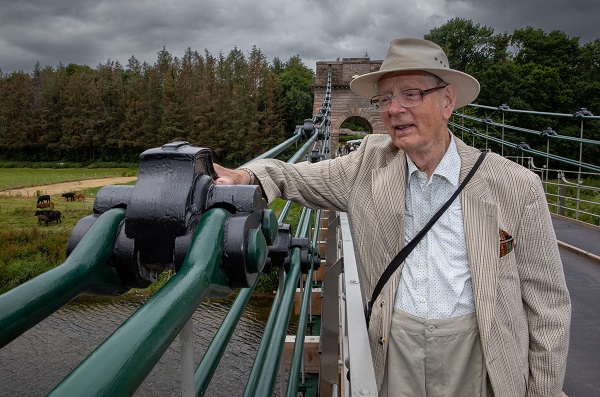
Prof. Roland A. Paxton
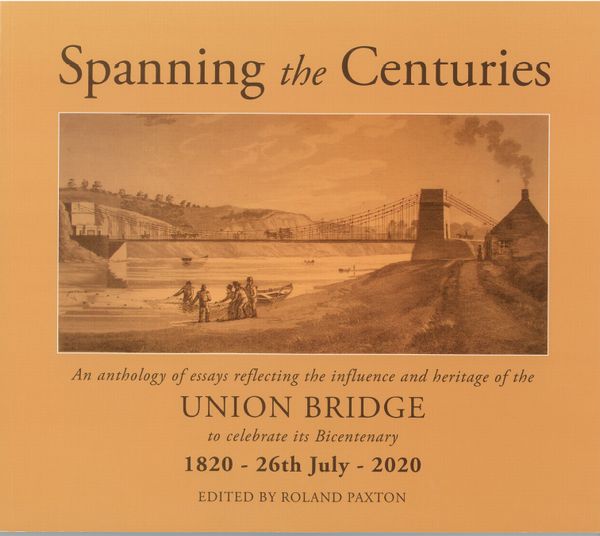
Spanning the Centuries
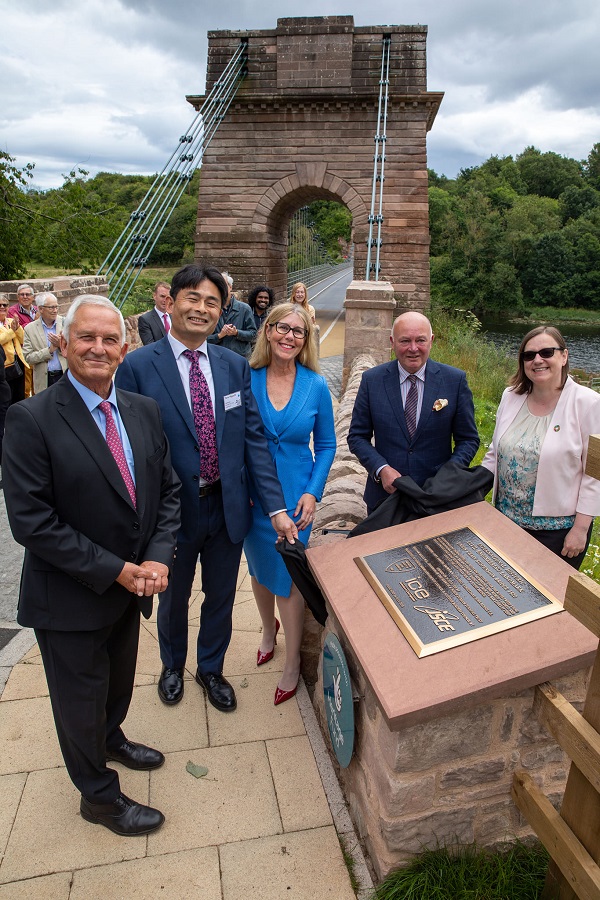
Officials from JSCE, ICE and ASCE
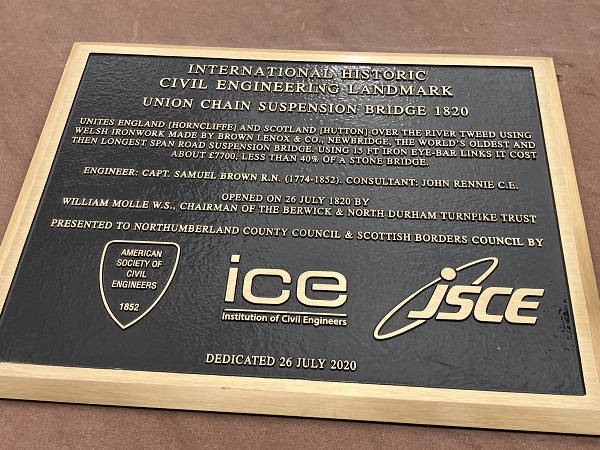
Commemorative Plaque of Union Chain Bridge
Updates
◆The International Infrastructure Archives – A Compilation of Japan’s Greatest Projects in Transfer of Civil Engineering Technology in Service –
http://www.jsce.or.jp/e/archive/
◆IAC “News Pick Up!!” on the JSCE Japanese website
https://committees.jsce.or.jp/kokusai/iac_dayori_2023
◆Summary of featured articles in JSCE Magazine Vol. 108, No.8, August 2023
http://www.jsce-int.org/pub/magazine
◆Journal of JSCE
https://www.jstage.jst.go.jp/browse/journalofjsce
◆ECCE E-Journal 26 - August 2023 edition
https://www.dropbox.com/scl/fi/hfivfn660abxao7so1jj6/ECCE-E-journal-26.p...
◆The 4th Asian Concrete Federation (ACF) Symposium on Emerging Technologies for Structural Longevity (ACF2022_ETSL): https://acf2022.aconf.org/index.html
◆CECAR10:http://www.cecar10.org/
◆ASCE 2023 CONVENTION, CHICAGO (October, 18-21)
https://convention.asce.org/
◆KSCE 2023 CONVENTION (October, 18-20)
https://eng.ksce.or.kr/activities/act01.asp?idx=60&page=1&sfield=>xt=&...
Subcription
The IAC News is one of the communication tools to share information and ideas with the members. We would like to invite you, your friends and colleagues to join the communication and to subscribe the IAC News. Please register online: (http://www.jsce-int.org/node/150). We look forward to meeting you.
